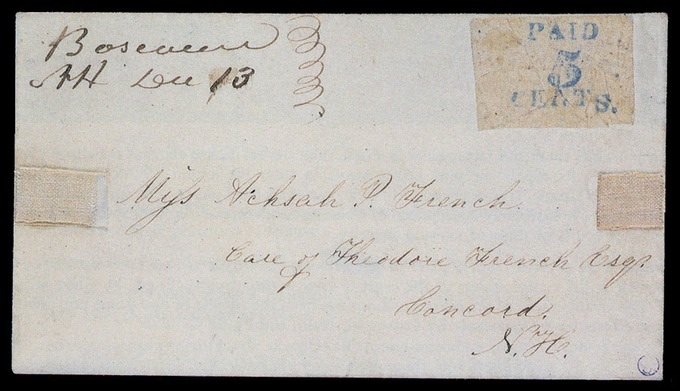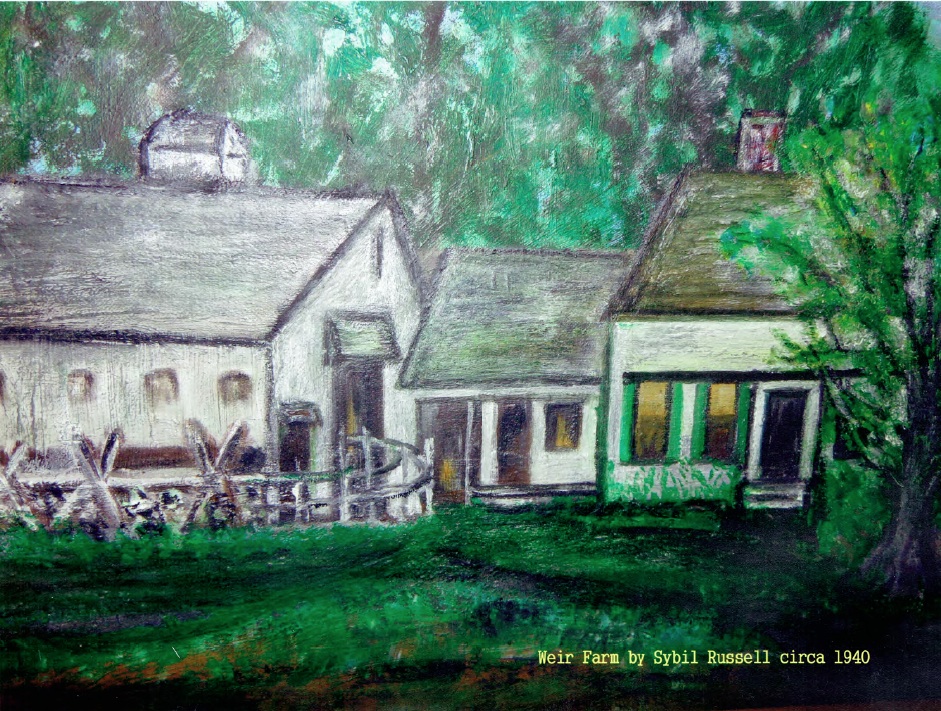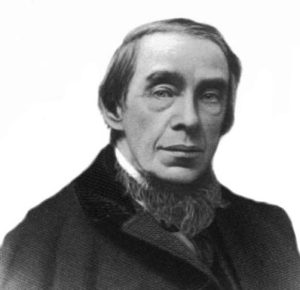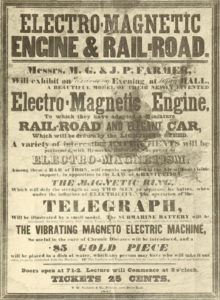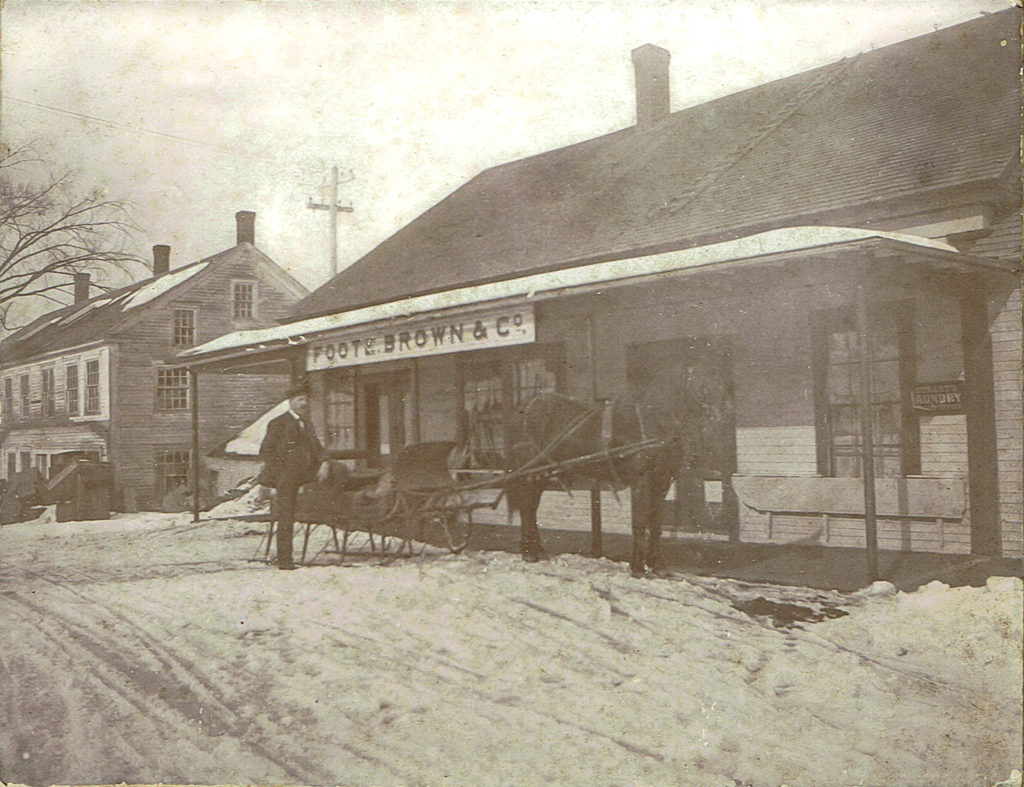(Excerpt from the 1983 History of Boscawen, written by Ron Reed)
In 1946 the Old Home Week committee selected the theme of “Welcome Home Day” for the annual festivities. The program was designed to honor the returning veterans and servicemen who served their home town and country in World War II. As the days counted down, the town continued to prepare for the celebration. More than forty of the property owners agreed to pay the cost of having their homes and stores decorated with flags and bunting for the occasion, and with few exceptions, all of the properties fro the Town Hall to Jones’ Hill were decorated. A service flag, representing all the men and woman who entered the armed forces from Boscawen., was ordered by the committee. The flag, which was four by six foot with one gold bar bearing the figure 5 (the number of killed in the service) and one blue star bearing the figure 210 (the number enrolled in the service), was to be displayed during the days of the festivities.
The celebration began on Saturday, August 17th, at 2:30 o’clock with a baseball game held at the Church Park. The game between the veterans from upper and lower Boscawen. Lower Boscawen was victorious. At 6:00 o’clock, a “We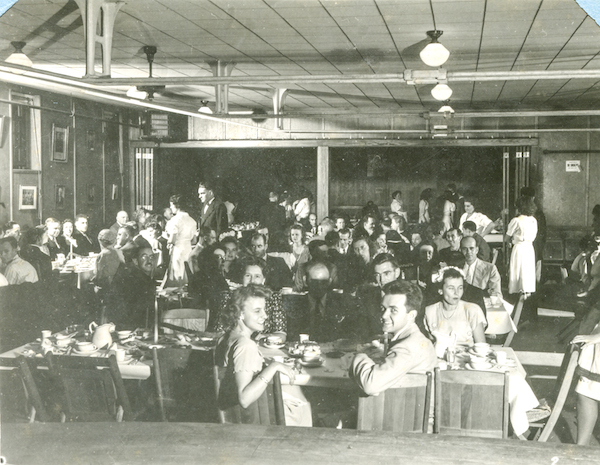
On Sunday, August 18th, at 10:30 o’clock, the celebration continued with a morning worship service attended by 250 at the Church Park. Rev. Roger P. Horton was the speaker at the service and music was supplied by the Congregational Church’s choir and Flossie Folsom, pianist. At noon, family groups gathered for a picnic lunch. A highlighted and colorful event was the parade at 1:30 o’clock. The Never’s Band lead the parade and Joseph Colby was the Marshall. Veterans from both World War I and World War II marched in full dress, the various children and and adult groups participated in the parade by riding on floats or marching and the selectmen, Howard Holmes, Clyde Fairbanks and Jesse Braley, rode in a cart pulled by oxen. At 2:30 o’clock, the Welcome Home events continued with Norris Cotton, GOP Congress nominee, who was the first speaker. A memorial service followed, in remembrance of the five men killed in the war., conducted by Rev. Asa Parker. Those five men who gave their lives were: Joseph G. Annan, Leo J. Cournoyer, Clinton R. Hollins, Robert R. McIntyer and Leonard W. Peirce. Later the Never’s Band performed, and Peirce Virgil Chaffin and Arthur Faneuf sand to the music played by Flossie Folsom. The final event of the celebration was a modern fire fighting equipment demonstration by the Torrent Engine Company. It was an Old Home Day to remember!
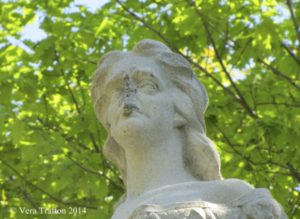
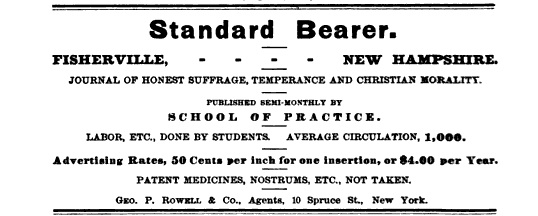
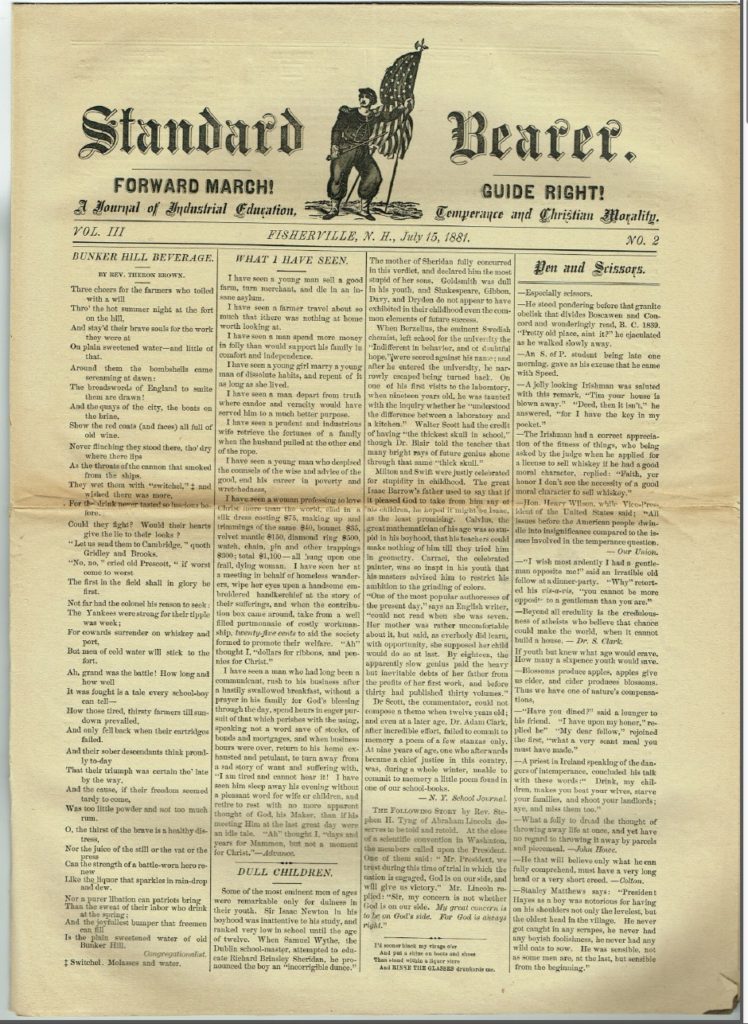

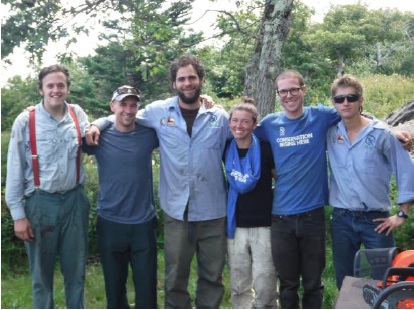
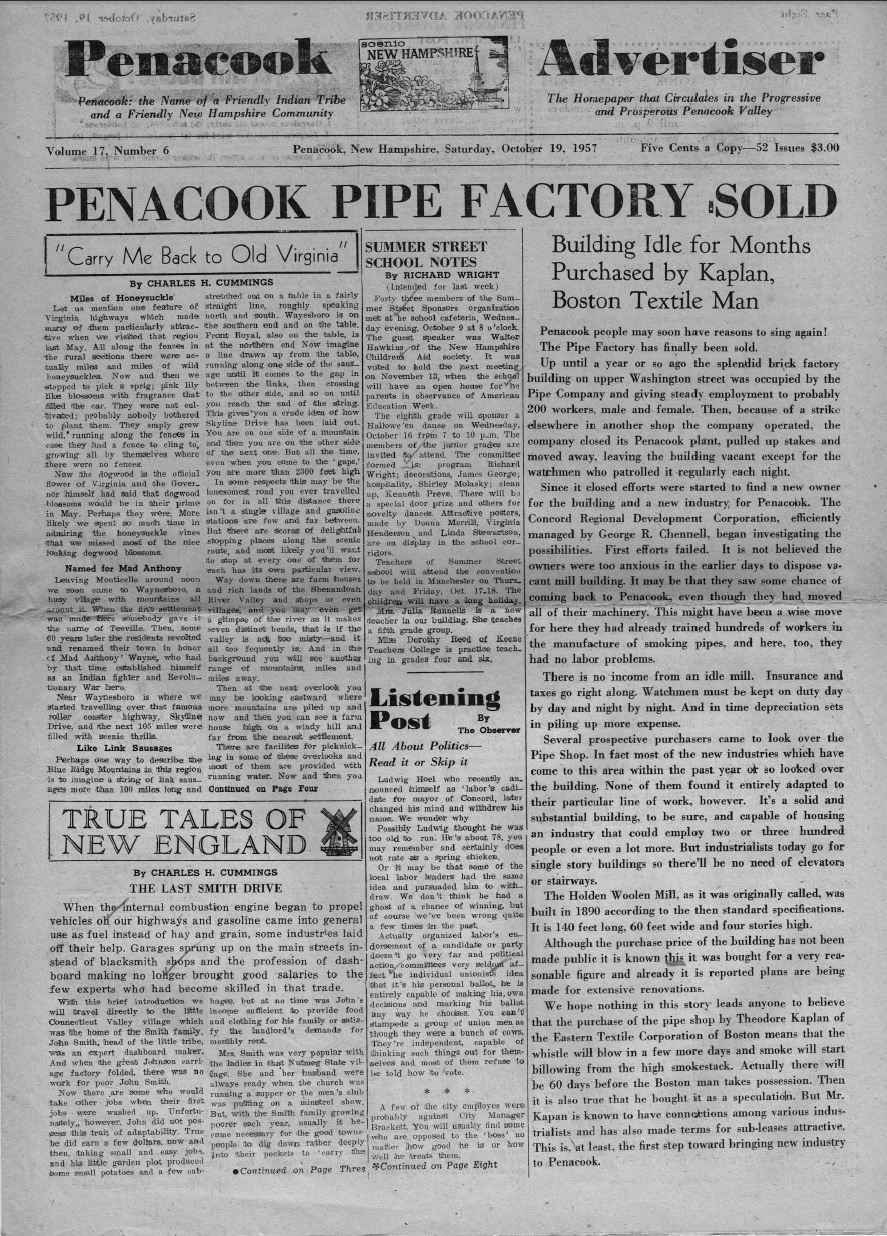
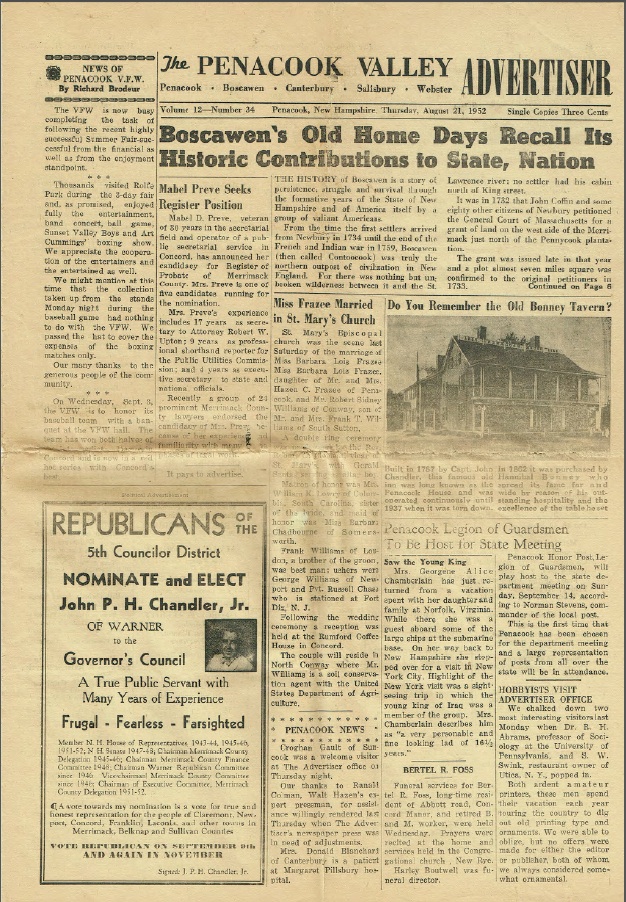
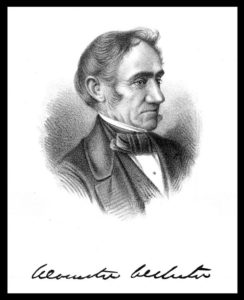 Worcester Webster, a cousin of Daniel Webster, served as postmaster in Boscawen from February 5, 1841 to January 15, 1852. In 1846 he created a “Provisional” postage stamp that was attached to an envelope addressed to Miss Achsah French, a 14 year old relative of Webster’s who lived in Concord. The stamp was dull blue ink, hand-stamped on a thin piece of yellowish handmade paper, with an adhesive to affix it to the envelope. Provisional stamps predate or take the place of the first official US stamps which were issued in 1847, as Congress set the postal rates, but had not yet printed stamps.
Worcester Webster, a cousin of Daniel Webster, served as postmaster in Boscawen from February 5, 1841 to January 15, 1852. In 1846 he created a “Provisional” postage stamp that was attached to an envelope addressed to Miss Achsah French, a 14 year old relative of Webster’s who lived in Concord. The stamp was dull blue ink, hand-stamped on a thin piece of yellowish handmade paper, with an adhesive to affix it to the envelope. Provisional stamps predate or take the place of the first official US stamps which were issued in 1847, as Congress set the postal rates, but had not yet printed stamps.